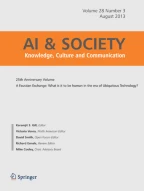Abstract
Two running themes of this paper are as follows: (1) there is an underlying unity—which in fact is ‘identity’ of the substance—of all major world religions, and (2) different modes of Universe and the unification of cognitions therein are expressions of answer to various metaphysical questions. The present endeavour in this way keeps the unity of human society—a step towards realizing ‘vasudhāeva kuṭumbakam’—‘Whole of Earth is a family’—as its ultimate goal. This paper envisages the realization of this objective through arriving at the common metaphysical structure of religions that constitute the core of humanity’s beliefs. The endeavour in this sense is essential for a globalized world since a globalized world of twenty-first century will be awfully susceptible to cataclysmic possibilities in the absence of knowledge of existence and understanding of such a common metaphysical structure, unlike as in the non-globalized world of nineteenth or even that of twentieth century, for example.
Similar content being viewed by others
Explore related subjects
Discover the latest articles, news and stories from top researchers in related subjects.Notes
Radhakrishnan (1965).
Wheaton (2008) “The New York Times obituary on Samuel Huntington notes,…, that his “emphasis on ancient religious empires, as opposed to states or ethnicities, [as sources of global conflict] gained…. more cachet after the Sept. 11 attacks.””.
Philosophy East and West (1965).
IPQ (1998).
Hawking (1988, p. 50).
It clearly appears that Buddhism, Advaita, Viśiṣṭādvaita and Dvaita, are in a Fibonacci series—{Zero, One, One, Two, Three, …, n}.
See Govindacharya (1996) for Madhva’s “Tantrasārasaṁgraha” of Madhvācārya.
“Many Orthodox Christians annually celebrate Christmas day on or near January 7…described in the Christian Bible. This date works to the Julian Calendar that pre-dates the Gregorian Calendar, which is commonly observed.” “Time and Date” (2014). If this date is almanac based then we have to find out the the original day of birth of Jesus. On the contrary, if 7th January is a sort of fixed date then it essentially refers to the 7th layer of the Pyramid where the tesseract has come into full bloom with kenosis being complete.
Pickthall (1989).
After all, what has been projected forth in creation needs to be withdrawn back. Precisely this is the function performed by projective geometry in the present context.
Wikipedia (2011(k)).
Wikipedia (2011(k)).
See Bogomolny (2012).
Summers (2012).
Wikipedia [2012(h)].
Wikipedia (2014(a)).
Wikipedia (2014(a)).
“In mathematics, tensor calculus or tensor analysis is an advanced extension of vector calculus to more general mathematical objects called tensor fields (tensors that may change over a manifold, e.g. with space and with time)” Wikipedia [2012(ag)].
Wikipedia (2014).
References
Bogomolny A (2012) Pascal lines: Steiner and Kirkman theorems-II. http://www.cut-the-knot.org
Daya Krishna (1965) Adhyāsa: A Non-Advaitic Beginning in Śaṁkara Vedānta. Philosophy East and West http://philpapers.org/rec/KRIAAN 15(3/4):243–249
Govindacharya B (ed.) (Kannaḍa) (1996) Tantra-sāra-saṁgraha of Śrī Madhvācārya, Hrishikesha Prakashana, Yogadeepika Trust (R), Śrī PalimāruMaṭha, Udupi, 1996
Hawking S (1988) A brief history of time, from the big bang to black holes. Bantam Books, New York
Huntington S (1996) The clash of civilizations and remaking of the world order
Indian Philosophical Quaterly (IPQ) XXV(1):1–13
Pickthall MM (Tr.) (1989) Holy Qur’an (or The Holy Qur’aan), 1st edn. Published by Abdul Moin for Islamic Book Service, 2241, Kucha Chelan, Darya Ganj, New Delhi, 110 002
Radhakrishnan S (1965) Speech: “The Founding Moment”. Excerpts from Prof. S. Radhakrishnan’s inaugural address at establishing of Indian Institute of Advanced Study, Shimla, in 1965
Summers V (2012) eHow contributor, “How to collapse 3D into 2D Mathematical Structures”. http://www.ehow.com/how_6234380_collapse-3d-2d-mathematical-structures.html
Time and Date (2014) http://www.timeanddate.com/holidays/common/orthodox
Wikipedia [2011(k)] http://en.wikipedia.org/wiki/Projective_geometry
Wikipedia [2012(ag)] http://en.wikipedia.org/wiki/Tensor_calculus
Wikipedia (2012(h)) http://en.wikipedia.org/wiki/Projective_plane
Wikipedia (2014) http://en.wikipedia.org/wiki/Culture. Downloaded on 21 April 2014. Webpage last modified 8 April 2014
Wikipedia (2014(a)) http://en.wikipedia.org.orgwiki/Pascal's_Theorem
Acknowledgments
My grateful thanks to the reviewer of AI&S who reviewed an earlier version of this paper, and made very useful points. I have responded to these points in Sect. 7 above. This is an abridged version of my work entitled “Synthesis of World Religions: Arriving at the Common Metaphysical Structure” to be published shortly. The work was carried out at Indian Institute of Advanced Study, Shimla as Fellow during 2010–2012. I gratefully acknowledge the then Director of the Institute, Prof. Peter Ronald de Souza, for his whole-hearted support and encouragement.
Author information
Authors and Affiliations
Corresponding author
Rights and permissions
About this article
Cite this article
Vinay Kumar, U.A. On the metaphysical meaning of major religious symbols for a globalized world. AI & Soc 30, 147–165 (2015). https://doi.org/10.1007/s00146-014-0572-5
Received:
Accepted:
Published:
Issue Date:
DOI: https://doi.org/10.1007/s00146-014-0572-5
Keywords
- Aparokṣa (non-indirect apprehension of the Self)
- Individuating Factor (I-Factor)
- Canvass of consciousness
- Geometrization (or mathematization)
- Ontologization
- Adhyāsa (superimposition)
- Hypersurface (Block)
- Event Horizon
- Dimensioned point
- Dimensionless point
- Kenosis
- Pascal triangle
- Mystic Hexagram
- Projective Geometry
- Kaaba
- Lattice packing
